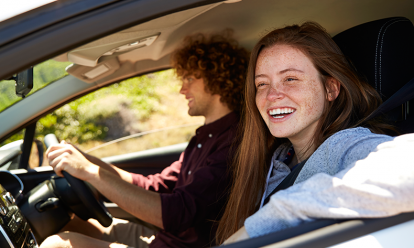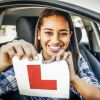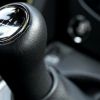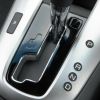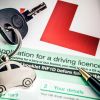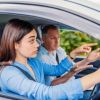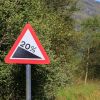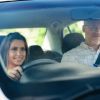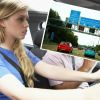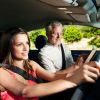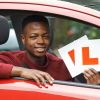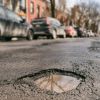Or maybe you’re learning to drive and preparing for your driving test and in need of some last-minute advice on manoeuvres? Either way, here’s our ultimate guide to forward and reverse bay parking.
What is bay parking?
Bay parking is the art of manoeuvring your car into a parking space.
It might sound like a simple, everyday part of driving but for some motorists the prospect can be daunting at first.
There are two types of bay parking:
- Reverse bay parking — this is when you reverse into a parking bay and then drive out
- Forward bay parking — which sees you drive into a parking bay and then reverse out
How big is a parking space?
There are two main types of parking bays that you’ll come across when parking your car: perpendicular parking bays and the less-common angled parking bays (also called echelon parking bays) which are helpfully placed at angles to the road.
The recommended size of a parking bay in the UK is 2.4 metres wide and 4.8 metres long, with a recommended space of 6 metres for manoeuvring (roadways). These are not legal minimums though, which is why some spaces might seem tighter than others.
Some of our favourite cars are getting wider nowadays so parking spaces have never seemed so small! Even compact cars are spreading out — The Nissan Micra has grown in width from 1.61 metres to 1.98 metres over the last 20 years.
Why do I have to learn how to bay park?
If you ever want to use any of the UK’s thousands of car parks that use bay parking spaces, you’ll need to learn how to not only safely enter a parking bay, but also how to exit one too.
Since December 2017, front and reverse bay parking has also been included as one of the three possible manoeuvres in the practical driving test for learner drivers, along with parallel parking, reversing and re-entering traffic. Examiners could ask participants to undertake a reverse or forward bay park, so it should be something you practice a lot of before taking your practical.
Learner Driver Car Insurance
Only pay for the cover you need until you’ve passed your test. Get learner driver insurance so you can practice outside of your lessons.


What should I look out for when I’m bay parking?
As with every manoeuvre, the most important thing to do before you start is to check all around your car for pedestrians, cyclists and anyone else that might be in your vicinity.
This is particularly important if you’re bay parking in a busy car park with a high volume of pedestrians, so check your mirrors and blind spots before and during the manoeuvre. If cyclists or pedestrians get close to your car, stop and wait for them to safely move past before carrying on.
How to do forward bay parking with reference points
Forward bay parking might sound easier but remember that unless you’re parking in an empty car park, you’ll need to reverse out into traffic to exit.
These instructions assume that you’re parking into a bay on the right-hand side of the road, so if you are parking into a left-hand side bay then directions are reversed.
- Make sure the parking bay is both wide and deep enough for your vehicle to safely fit in.
- Position your car on the left-hand side of the road across from the parking bay, leaving as wide a turning circle as possible to safely enter the bay.
- Check your mirrors and blind spots for other road users in your vicinity. Remember to signal your intention to move by using your indicators.
- Move your car forward slowly until the right-hand line of your bay lines up just below your right wing mirror – take another check of your mirrors and blind spots.
- Steer to full right lock, edging forward slowly into the space.
- As you enter the bay, straighten up your steering when the dashboard is in line with the horizon, moving forward slowly until the kerb or line marking the front of the space comes just underneath your right wing mirror.
How to reverse out of a parking bay
If you’ve forward bay parked, the likelihood is that you’ll need to reverse out of the space.
- Select reverse gear and look up and down the road to ensure that the coast is clear, checking your mirrors and blind spots.
- If the road looks clear move backwards slowly, being prepared to stop if another road user suddenly approaches.
- When you’re about a third of the way out of the space, steer full lock on the opposite direction to which you want to turn — i.e. if you want to turn right, steer full lock left while reversing out of the space. If the car park has a one-way system in place, make sure you turn the correct way.
- Continue to reverse slowly on full steering lock until you’re confident you’re able to drive away safely. Select first gear and move off.
How to reverse bay park with reference points
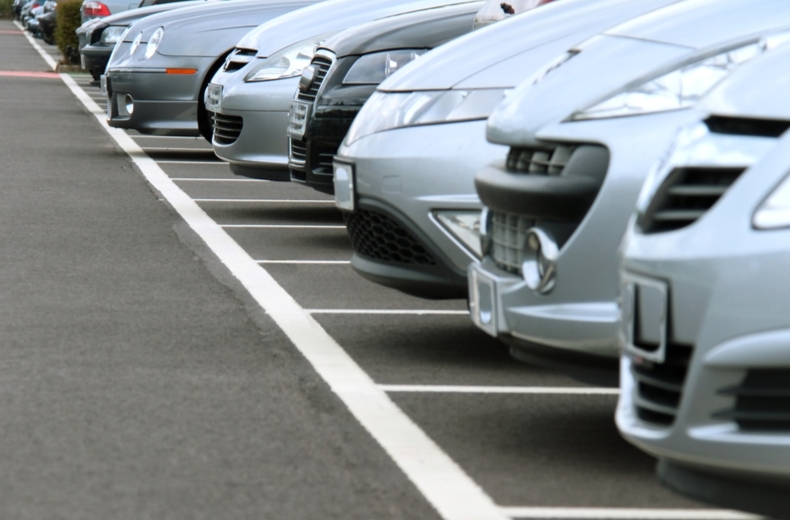
Reverse bay parking might seem trickier but in certain situations it can be easier and safer, as you’ll avoid reversing out into traffic.
To help make reverse parking easier, there are four reference points (A – D) drivers are advised to use to help them safely back into a space.
These instructions assume that you are parking into bays on the left-hand side of the road, so if you are parking on the right-hand side the directions are reversed.
- Make sure the space is both wide and deep enough for your vehicle to safely fit in it.
- Position yourself with around a car’s width of space between you and the bay you’re reversing into, giving you enough room to manoeuvre.
- Slowly pull up about two car lengths past the bay you want to reverse into. Line up the middle of your passenger door with the white line two along from the bay you want to reverse into (reference point A), select reverse gear and prepare to move.
- Check all around the car to ensure it’s safe to move.
- At this point steer full lock on the left, moving the car slowly into the bay, remembering to constantly check around your car using your door and rear-view mirrors. As you begin to reverse on full lock, the left-hand line of your parking bay will appear in your left wing mirror (reference point B).
- While reversing on full lock, the right-hand line of your parking bay will appear in your right wing mirror (reference point C).
- As the car slowly enters the space and draws parallel with the white lines of the bay, straighten your steering and edge backwards.
- You will know that the car is straight because both white lines will appear in your wing mirrors (reference point D).
- Continue to edge slowly back into the space, using your wing mirrors, rear-view mirror, and the white lines of the parking bays to ensure you reverse far back enough in the bay without hitting the kerb, wall or other car at the rear of the space.
- When you drive out of the bay, make sure you use all your mirrors and check all blind spots to ensure it’s safe.
- Edge out slowly, waiting until your car is around a third of the way out of space before turning the steering wheel to ensure you can safely make it out. If the car park has a one-way system, be sure to drive out of the bay in the right direction.
Will I need to park in a bay on my driving test?
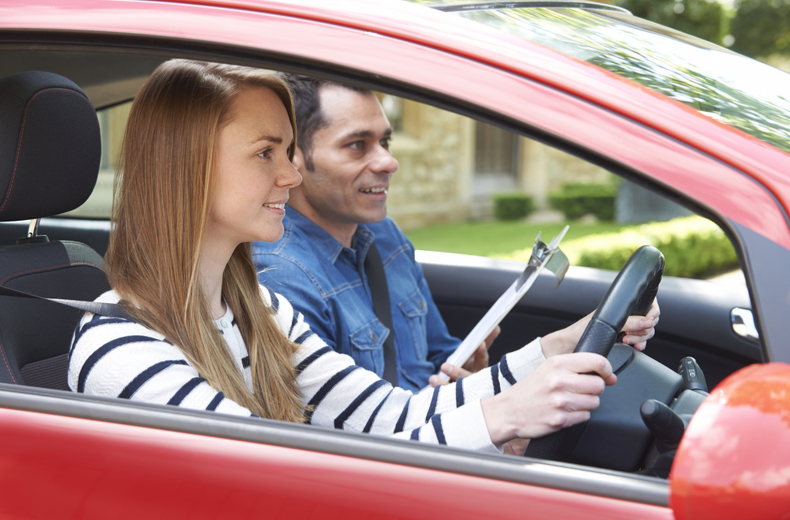
That depends. Since changes were made to the practical driving test in December 2017, learner drivers are now tested on one of the following three reversing manoeuvres during their tests:
- Park in a parking bay (the examiner will indicate whether you need to do this by driving in and reversing out, or reversing in and driving out);
- Parallel park at the side of the road;
- Pull up in the right-hand side of the road, reversing for two car lengths and re-joining traffic.
READ MORE: What happens after I pass my driving test?
Will I fail my driving test if I can’t park in a bay?
In a test situation, the examiner is looking for three things from a candidate undertaking a bay parking manoeuvre: control, accuracy and observation.
Even if you do become unstuck while trying to bay park, it doesn’t necessarily mean you’ve automatically failed. If you need to reposition your car to correct a loss of control or accuracy this will likely see you notch up a minor fault.
However, it is fairly common for learners to pick up major faults during these manoeuvres by displaying either a complete misjudgement or significant loss of control, so give yourself as much chance as possible of passing by making sure you practise beforehand.
Learning to drive?
It's a good idea to memorise each driving manoeuvre with an interactive app. Driving Theory Test UK is a great place to start, with all necessary learning materials, hazard perception clips and Highway Code info included. You can download it here:
Black Box Insurance
Want to pay less for your car insurance? Whether you’re a new driver or just looking to reduce costs, we can help.
